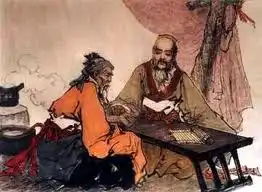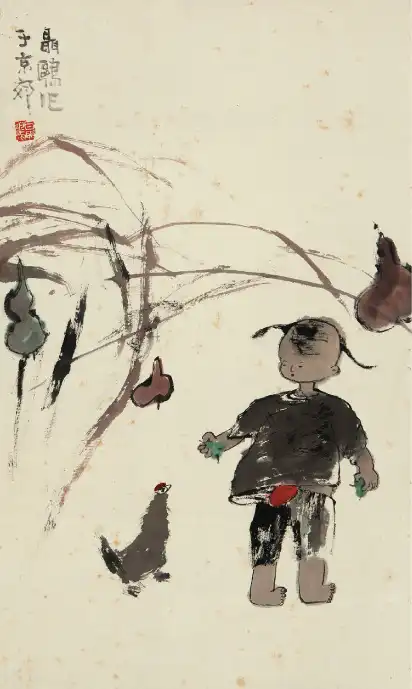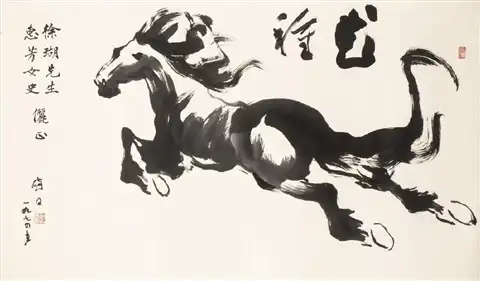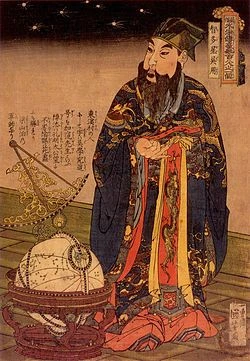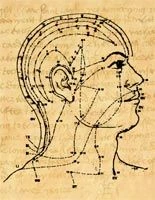Introduction to the disharmony
Major symptoms:
- swelling
- sores
- carbuncles
- abscesses
- nodules
- overall sickness accompanies the above symptoms
“Internal heat” is accumulated through excessive or chronic negative emotions (negative emotions have heating nature), poor diet (hot, spicy, and greasy foods), or febrile diseases. It manifests with “hot” symptoms, such as fever, redness, sensation of heat throughout the body, thirst, etc.
“Toxic heat” is a condition in which “internal heat” has accumulated to become so intense that it is toxic like poison for the body. Just like a toxic bite from a poisonous animal “toxic heat” may manifest with local inflammation (swelling/sores/nodules) together with overall sickness. This comparison is only relevant, not literal, and is used for the purpose to help distinguish "toxic heat" from the other heat patterns. When there is "toxic heat" there is internal or external oozing infection manifesting in sores, carbuncles, abscesses, etc., that is also accompanied with overall sicknes such as high fever, lethargy, and other hostile effects of infectious diseases.
Herbs that treat “heat-toxin” are herbs with anti-inflammatory, anti-infectious, and anti-viral properties. (1) They are often combined with herbs that clear “wind-heat”, with herbs that clear “internal fire” , and with herbs that clear “damp-heat” .
Major Chinese herbs
In traditional Chinese medicine a famous herb that treats heat-toxin is Jin Yin Hua (Lonicera japonica). The translation of the herbs is “gold-silver flower” and there is a lovely story about how the herb got its name.
Back in the days in China in a small village there were two twin girls who were very close. One was named Golden Flower and the other – Silver Flower. They loved each other very much and were inseparable. When they grew older one of the girls fell ill with high fever and red spots all over her body. The doctor warned everyone to keep away from the girl as it has a contagious and life-threatening disease, for which there was no cure. But her sister loved her so much that insisted that she stayed close and cared for her. Couple of days later the two sisters died. The spring after they were buried a beautiful plant with lots of white and yellow flowers grew on their grave. The people from the village picked that flower and used it to successfully treat the same disease that the sisters died from. They called the plant “gold-silver flower”. (3)
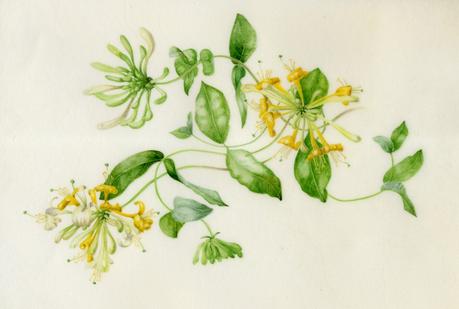
Jin Yin Hua enters the Lung, Large Intestine and the Stomach and treats hot and painful sores and abscesses. It also addresses “wind-heat”, “summer-heat” and “damp-heat” conditions.
Dandelion – Pu Gong Ying (Taraxacum mongolicum) is a cold and bitter herb that in the West is largely used for detoxification of the Liver. According to Chinese medicine this herb also enters the Liver. It dissipates sores and abscesses that are hard and firm, and is especially beneficial for breast abscesses; it also promotes lactation, when there is lack of breast milk due to heat (1) (when you cut the stem of the herb it leaks white milk-like fluid).

There is a story about a young woman who suffered from mastitis and had a lump underneath her breast. Embarrassed to ask her father for help she kept it a secret but her father eventually found out and kicked her out of his house, suspecting that the young woman may have done something immoral. A fisherman and his daughter found the woman at a river bank and took her in. When they found out about her problem the fisherman went to the river and collected some herbs – some of the plants they boiled in water and had the woman drink the tea, some of the plants they crushed and applied to the breast lump topically. The young woman recovered and named the plant after the fishermen, never to forget his kindness. Since then Dandelion is also known in China as the “Fisherman’s herb”. (3)
The fruiting body of the fungus, known in the West as Puffball, in Chinese medicine is used to clear heat-toxin. Ma Bo (Lasiosphaera fenslii) is especially beneficial for red, painful, swollen throat and loss of voice. It is used topically to stop bleeding (1) and heal topical injuries.

Most of the herbs that clear heat-toxin and reduce sores, carbuncles and abscesses are beautiful flowers, leaves or vines. Da Qing Ye (Isatis tinctoria) – “big green leaf”, cools the blood and reduces blotches; Zi Bei Tian Kui (Begonia fimbristipulata) translated as “purple backed heavenly big-flowered plant” also cools the blood; Zi Hua Di Ding (Viola yedoensis) – “purple flower earth spike” can be used topically for sores; Jin Sha Teng (Lygodium japonicum) – “gold sand vine” is good for stones or blood in the urine; Hong Teng (Sargentodoxa cuneata) – “ red vine” invigorates the blood and reduces stasis, etc. Maybe the only herb to treat heat- toxin with not that flattering name is Yu Xing Cao (Houttuynia cordata) – “fishy-smelling herb”. It enters the Lung and benefits cough due to Lung heat with thick yellow phlegm, and drains damp-heat from the Large Intestine. Last but not least Bai Hua She She Cao (Heydyotis diffusa) - “white-patterned snake’s tongue herb” - strongly relieves fire toxicity and reduces abscesses, and is also used internally and topically for snakebite. (2) It is also an herb that caught the intention of some cancer researchers with its ability to increase the ingestion of bacteria (phagocytosis) by the white blood cells (lymphocytes) in the vertebrate’s immune system. (1)
Healing foods
Foods that benefit toxic heat are the foods with cold nature, similar to what is recommended for “internal fire”.
To unlock the rest of this article select "Yes, I want to learn!" below.
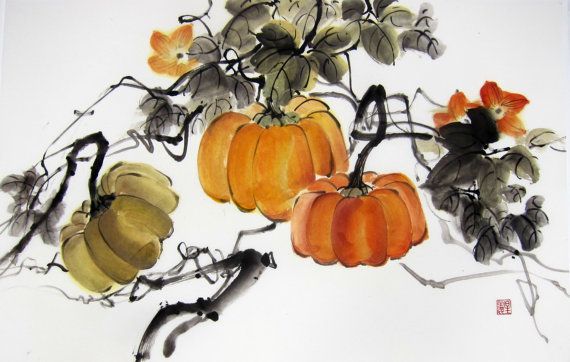
Food therapy is the most economical and non-toxic biochemical approach to health and disease. Food is something we continuously use to sustain our lives. Learning what foods are healing (and what disruptive) for each condition has the potential to convert every meal into a form of therapy.
YS
(1) Benski, Dan & Gamble, Andrew (1993). Materia Medica, Revised Edition. Seatle: Eastland Press, Incorporated
(2) Pitchford, Paul (2002). Healing with Whole Foods. Berkeley: North Atlantic Books
(3) Lu, Henry (2005). Chinese Natural Cures. New York: Black Dog & Leventhal Publishers, Inc.
(4) Holmes, Peter (1998). The Energetics of Western Herbs. Boulder: Snow Lotus Press, Inc.
Related Articles:
How the Climatic Factor Heat Affects Health
Heat and Dryness in the Large Intestine
Note: This site and its services are to consumer educational use only. Nothing contained in this site is or should be considered, or used as a substitute for medical advice, diagnosis or treatment. We advise users to always seek the advice of a physician or other qualified professional with any questions regarding personal health and medical condition. Please read our Disclaimer

